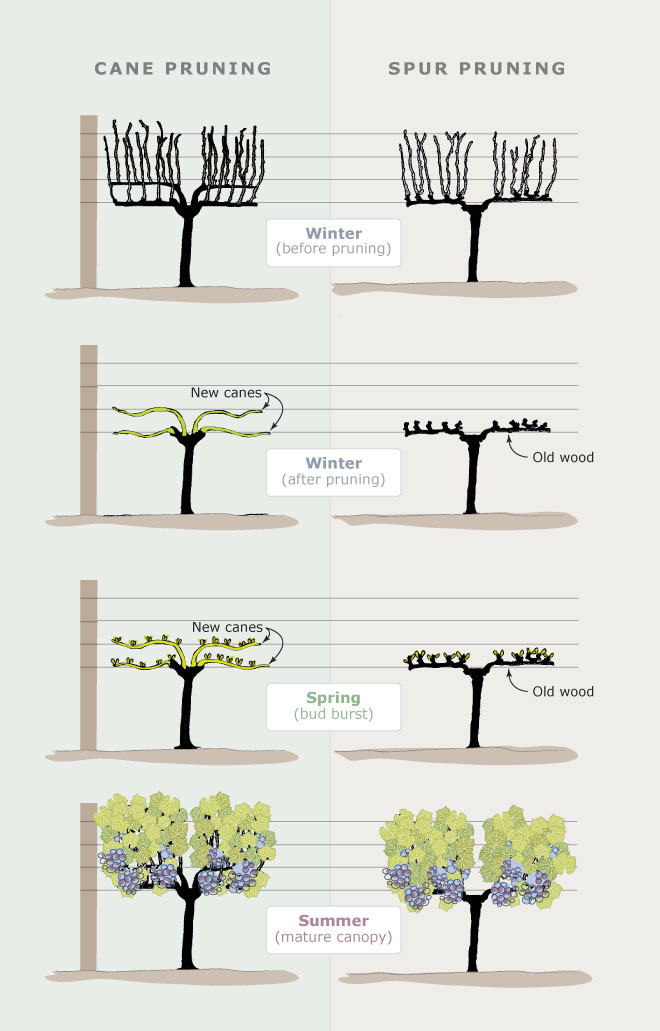
Grapevines are pruned in winter by cutting away most of the vine that is not required for the next season’s growth. Cane pruning is the most common method in New Zealand. The pruner selects two or four shoots (canes) from the previous season and trains them along the trellis wires. The other canes are removed, and new shoots sprout from the buds on the selected canes in spring.
Spur pruning is done on vines that retain one or two pairs of long canes (a permanent cordon) trained along a trellis system. Each winter, new canes that have grown along the permanent cordon are cut back to a small shoot containing two buds, known as a spur. In spring new growth develops from the buds on the spur.
Te whakamahi i tēnei tūemi
Te Ara - The Encyclopedia of New Zealand
This item has been provided for private study purposes (such as school projects, family and local history research) and any published reproduction (print or electronic) may infringe copyright law. It is the responsibility of the user of any material to obtain clearance from the copyright holder.
Source: Caroline Courtney, Wine in New Zealand. Auckland: Godwit, 2003, pp. 218–219.








Tāpiritia te tākupu hou